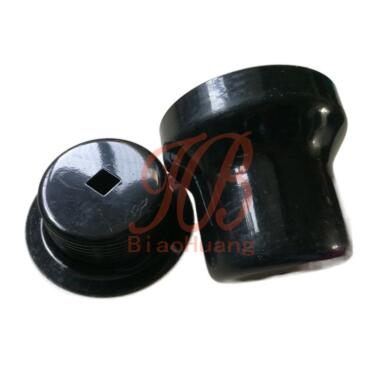Feb. 19, 2025
When it comes to maintaining the integrity and longevity of your equipment, tubing thread protectors play a crucial role. These simple yet effective components help protect the threads of pipes and tubes during storage, transportation, and handling. In this guide, we’ll explore everything you need to know about tubing thread protectors, their benefits, and their applications across various industries.
Tubing thread protectors are specially designed caps or covers that fit over the threaded ends of tubes, pipes, or rods. Their primary purpose is to safeguard the threads from damage caused by environmental factors, physical impact, or contamination. These protectors are typically made from durable materials such as plastic, rubber, or metal, depending on the application and the level of protection required.
One of the most significant advantages of using tubing thread protectors is preventing damage to the threads. Threads are a critical part of the pipe, tube, or rod, as they enable secure connections between components. Any damage to these threads can lead to costly repairs or replacement, delays in production, or unsafe operations. Thread protectors help avoid such issues by acting as a barrier against wear, scratches, or corrosion.
By preventing thread damage, thread protectors also help ensure the safety and reliability of your equipment. A damaged thread can cause leaks or even catastrophic failures, especially in high-pressure environments such as the oil and gas industry. Protecting threads with quality protectors ensures that connections remain secure, reducing the likelihood of dangerous incidents and downtime.
Although they are a relatively small investment, tubing thread protectors can save businesses money in the long run. By reducing the risk of damage during handling or transport, they minimize the need for costly repairs or replacements. Additionally, they help avoid delays in project timelines, allowing for smoother operations and on-time deliveries.

There are several types of tubing thread protectors, each designed for different industries and applications. Here are some of the most common types:
Plastic thread protectors are the most widely used option due to their lightweight nature, durability, and affordability. They are ideal for industries where cost-effectiveness is crucial, such as construction and manufacturing. These protectors are available in various sizes and configurations to fit different types of threads.
Rubber protectors are more flexible than plastic ones, making them a great option for tubes and pipes that may experience frequent movement or vibration. Rubber thread protectors are often used in industries like oil and gas, where equipment is subject to harsh conditions.
Metal thread protectors offer the highest level of protection against physical impact, extreme temperatures, and harsh chemicals. They are commonly used in high-end applications where equipment requires additional safeguarding, such as in aerospace or offshore oil rigs.
Tubing thread protectors are used across a wide range of industries, each with its unique set of challenges. Here’s a look at how they are applied in different fields:
The oil and gas industry relies heavily on durable equipment, and tubing thread protectors are essential for preventing damage during transportation and storage. With pipes often being shipped long distances, protecting the threads ensures that they remain in optimal condition for installation and use in drilling operations.
In construction and manufacturing, tubing thread protectors are used to safeguard steel pipes, rods, and tubes that will later be used in building structures or machinery. Protectors ensure that threads stay intact through the rough handling often encountered in these industries.
Aerospace components need to be free from defects to ensure safety and performance. Tubing thread protectors are used in the transportation of critical parts, preventing thread damage that could jeopardize the structural integrity of aircraft or spacecraft.
A leading oil and gas company in the Middle East faced delays and unexpected maintenance costs due to damaged threads on their equipment. After implementing a new system of using high-quality plastic thread protectors during transit and storage, the company saw a 30% reduction in equipment failures related to thread damage. This proactive measure not only saved them time but also significantly lowered repair costs.
When selecting a pipe thread protector, it’s important to consider the following factors:
Material: Choose a protector material that matches the level of protection required for your specific application.
Size: Ensure the protector fits the threading size of your pipes or tubes to provide a snug and secure fit.
Environment: Consider the environmental conditions your equipment will be exposed to, such as extreme temperatures or chemical exposure.
Tubing thread protectors may seem like a small part of the equipment puzzle, but their impact on equipment longevity and safety is significant. By protecting threads from damage, these protectors help industries save money, ensure reliability, and maintain the integrity of their operations. Whether in oil and gas, manufacturing, or aerospace, the right tubing thread protector is essential for long-term equipment performance.
126
0
0
All Comments (0)
If you are interested in sending in a Guest Blogger Submission,welcome to write for us!
Comments